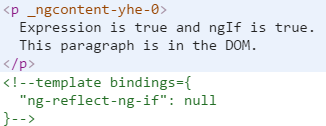在初探 part.1 的時候,提到了 Angular directive 有分三種,Component, Attribute Directive and Structural Directive,而之前介紹了 Attribute Directive,知道如何建立與使用,這次就來研究一下 Structural Directive 吧!
什麼是 structural directive ?
Structural directives 負責 HTML 的 layout。通常是藉由加入、移除或操作 element ,將 DOM 架構進行繪製或重繪的動作,就和其他的 directives 使用方式一樣,套用到 HTML host element 上,並且依照這個 directive 有什麼功能去進行處理,而被套用的 host element 本身以及其底下的其他後代都是在 directive 執行的範圍內。
structural directive 很好分辨,directive 的名稱前面有星號 ( * ) 的 directive 就是 structural directive。
<div *ngIf="isChecked">is checked</div>
像上方的範例,我們很常在使用的 directive 之一 *ngIf ,只要帶著設定的屬性名稱,不需要加上任何括號就能執行。稍後會提到使用星號帶來的方便性,以及後面的字串其實是 microsyntax 而不是一般的 template expression 喔,Angular 會對星號的標記語法進行解語法糖 的動作,並且將結果放進 <template> 標記中,而這個 template 的影響範圍在 host element 以及其底下的後代。每個 strucural directive 都和對應的 template 內容不太一樣。
三個內建且常用的 structural directive —NgIf、 NgFor、 NgSwitch…等,在官網的 Template Syntax 文件中都有提到,也有提供參考的範例,以下為其中一個 template 的範例:
<div *ngIf="hero">{{hero.name}}</div>
<ul>
<li *ngFor="let hero of heroes">{{hero.name}}</li>
</ul>
<div [ngSwitch]="hero?.emotion">
<happy-hero *ngSwitchCase="'happy'" [hero]="hero"></happy-hero>
<sad-hero *ngSwitchCase="'sad'" [hero]="hero"></sad-hero>
<confused-hero *ngSwitchCase="'confused'" [hero]="hero"></confused-hero>
<unknown-hero *ngSwitchDefault [hero]="hero"></unknown-hero>
</div>
基本上大家都應該知道要怎麼去使用了,所以這篇不會提到如何使用,但是會去說明 structural directive 是如何運作的,以及要怎麼寫一個自訂的 structural directive。
關於 directive 大小寫的拼法,在官網文章中有提到這部分,雖然都是駝峰式命名 ( Camel Case ),但有分首字大小寫,首字大寫的例如:NgIf 是指 directive class 的名稱;而 ngIf 指的是 directive 套用時的 attribute 名稱。
Directive 的 class 是以首字大駝峰式命名 ( NgIf ), 套用 Directive 的 attribute 名稱則是首字小駝峰式命名 ( ngIf ),如果文章中提到它的屬性或這個 directive 在做什麼的,指的都是 directive class 的部分,如果是在說明如何套用到 template 中的 html,那就是指 directive attribute,這部分多多留意喔!
雖然前面的文章有提到過,但還是先來複習一下:除了本篇的 structural directive,另外還有兩種 Angular directives,components 以及 attribute。components 主要是管理一個區域原生的 HTML element ,簡單來說,就是帶有 template 的 directive。而 attribute directive 可以用來改變 element、component 或其他 directive 的外觀或行為,舉例來說,內建的 NgStyle directive 可以同時改變多個 element style。
一個 host element 可以套用多個 attribute directive ,但structural directive 就只能套用一個。
NgIf case study
NgIf 是最簡單的 structural directive 也最容易理解,它取得 boolean expression 後,把標記的 DOM 整個顯示或消失。
<p *ngIf="true">
Expression is true and ngIf is true. This paragraph is in the DOM.
</p>
<p *ngIf="false">
Expression is false and ngIf is false. This paragraph is not in the DOM.
</p>
Angular 的 ngIf 並非透過 CSS 來隱藏 element,而是直接從 DOM 本身加入或移除。這可以從瀏覽器的開發者工具檢查元素確定。

上圖有兩段內容,第一段就是一般正常的 DOM,而下方的第二段是沒有使用的部分,可以看到這個區塊不存在於 DOM 中,取而代之的是關於 “template binding” 的一段註解,詳細的說明後面會提到。
當條件是 false 時,NgIf 會將 DOM 上的 host element 移除,同時移除 DOM 相關的附件 ( 指 ngIf 建立在 host element 底下的相關屬性或事件 ),也會透過 Angular 變更偵測的機制將 component 抽離與毀滅,而 component 和 DOM 節點就可以被回收與釋放記憶體空間。
為何移除比隱藏要來得好?
Directive 可以隱藏不需要的段落,但不是將 display style 設置為 none,例如以下的範例:
<p [style.display]="'block'">
Expression sets display to "block". This paragraph is visible.
</p>
<p [style.display]="'none'">
Expression sets display to "none". This paragraph is hidden but still in the
DOM.
</p>
雖然設定 CSS display: none 在畫面上確實是看不見的,但元素仍會存在 DOM 中。

對於內容簡單的段落來說,要隱藏或移除都是無關緊要的,但若是 host element 附加到資料密集的 component 中,這樣的 component 即使隱藏起來仍會持續執行並附加自己的 element 在 DOM 上,因此也會持續進行事件的監聽,而 Angular 持續確認改變的特性可以去影響資料的綁定,無論 component 在幹嘛,Angular 都會持續進行這件事。
雖然在畫面上看不到,但 component 以及它底下所有子 components 都會佔用資源。效能和記憶體負擔都會變大,甚至反應變慢,導致使用者啥都看不到。
從正向的角度來看,要再次顯示 element 確實很快,component 先前的資料狀態也會留著且隨時可以準備顯示,就不用再重新初始化一次,畢竟這樣操作的代價可能會不小。所以單純用隱藏與顯示的話,有時候是對的。
但我們不應該總是這樣處理不顯示的內容,而是應該透過像 NgIf 這樣的 structural directive 把使用者看不到的 DOM elements 移除且將資源回收。這是在套用每一個內建或自訂的 structural directive 時都應該去思考的。在套用 structural directive 之前,你應該停下腳步,去思考加入與刪除 elements 或創造與銷毀 component 的後果。
關於星號 ( * ) 前綴
在使用 structural directive 時,你一定會注意到的星號前綴,無論是 ngIf 或 ngFor…等內建的 structural directives 名稱前面都要加上星號前綴,但為什麼要一定加上星號呢?它是做什麼的呢?
這是個 ngIf 範例,如果 hero 存在的話,就要顯示:
<div *ngIf="hero">{{hero.name}}</div>
這個星號是所謂的“語法糖”,簡化了一些複雜的語法,在 Angular 內部在解語法糖時,分成兩個階段,首先會將 *ngIf="..." 轉譯到 template attribute,template="ngIf",如下:
<div template="ngIf hero">{{hero.name}}</div>
然後它會將 template attribute 轉換成 <ng-template> element,並且包著 host element:
<ng-template [ngIf]="hero">
<div>{{hero.name}}</div>
</ng-template>
*ngIfdirective 移動到ng-templateelement,這個 element 會變成 property binding[ngIf]。<div>的部分,包含 class attribute 會移動到<ng-template>element 底下。
而上述這些內容都不會實際運作時呈現出來,只會顯示最後的結果到 DOM 中。

Angular 在實際渲染時會消耗 <ng-template> 的內容,取而代之的是可用來除錯時參考的註解。
而 NgFor 和 NgSwitch …等 directive 也是遵循一樣的 pattern 執行的。
小結
透過 NgIf directive 讓我們可以初步了解 structural directive 的運作機制,接著會再介紹 NgFor 的運作機制,看看 NgFor 和 NgIf 有何不同之處。